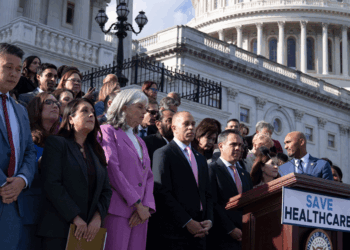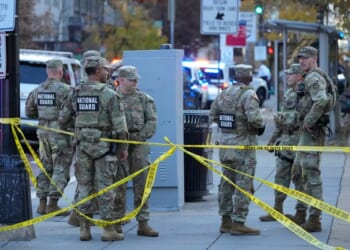During last year’s presidential debate between Donald Trump and Kamala Harris, Trump said violent crime was rising. ABC moderator David Muir immediately fact-checked him, claiming, “President Trump, as you know, the FBI says overall violent crime is coming down in this country … ”
Nearly every major media outlet echoed that narrative. National Public Radio ran the headline “Violent crime is dropping fast in the U.S.—even if Americans don’t believe it.” The Wall Street Journal declared, “Violent Crime Rate Falls Sharply After Pandemic Surge.” Vox insisted, “Violent crime is plummeting.” Axios reported, “New data shows violent crime dropping sharply in major U.S. cities.”
However, a new Bureau of Justice Statistics report, which includes data through 2024, shows that Trump was right during the debate when he said, “Crime here is up and through the roof.” The National Crime Victimization Survey shows violent crime surged 59%, with rape and sexual assault up 67%, robbery up 38%, and aggravated assault up 62%. That’s the largest four-year increase in the survey’s 52-year history.
The contrast with Trump’s first term is stark. The National Crime Victimization Survey data shows that between 2017 and 2020, violent crime fell 15%, including a 6% drop in robbery and a 24% decline in aggravated assault. Although rape and sexual assault rose slightly, the increase was less than 10% of what occurred under former President Joe Biden.
The federal government tracks crime in two main ways. The FBI’s Uniform Crime Reports count the number of offenses reported to police each year. The Bureau of Justice Statistics’ National Crime Victimization Survey, by contrast, annually asks about 240,000 people living in the United States whether they were crime victims. The latter method captures both reported and unreported incidents.
Last year, the media focused almost entirely on the FBI data.
Before 2020, the FBI and the Bureau of Justice Statistics trends generally moved in tandem. Since then, they’ve diverged sharply: The FBI reports fewer crimes, while more Americans say they’ve been victimized. Unreported crime was always a factor—and the reasons for it vary. They range from people reluctant to report being victimized by loved ones to a simple aversion by undocumented people to involve themselves with the criminal justice system.
In recent years, however, another factor appears to have skewed the FBI data: the breakdown of law enforcement in this country. When people believe police won’t catch or prosecutors won’t punish criminals, they’re simply less likely to report crimes. Between 2010 and 2019, victims reported 63.3% of violent crimes to police. In the last three years, that number plummeted to 48.8%. Arrests fell as well—from 26.5% before COVID-19 to just 16.6% afterward.
Other factors also distort the FBI data. Many big-city police departments, such as D.C., have reclassified serious offenses, apparently in an effort to make the streets seem safer than they are. Downgrading aggravated assaults to simple assaults removes them from the FBI’s violent crime statistics, for example. Whether an attack counts as “aggravated” often depends on whether a weapon was used—but many progressive district attorneys now refuse to pursue weapons charges. That difference matters because the NCVS asks victims directly whether a weapon was involved, even if police reports omit it.
Progressive prosecutors in cities like New York, Chicago, and Los Angeles have also made a habit of reducing felony charges. In Manhattan, for example, the district attorney’s office downgraded felonies 60% of the time—with 89% downgraded to misdemeanors and 11% to less serious felonies. Chicago has labeled some murders as “death investigations” rather than homicides. These practices appear to be spreading, and police may now be adjusting their own reports to reflect prosecutors’ leniency.
The latest federal data expose a stark reality: Violent crime has surged dramatically despite claims to the contrary. The growing gap between reported crimes and actual victimization reflects both a breakdown in law enforcement and the deliberate downgrading of offenses by progressive prosecutors. Until the justice system restores accountability and accurate reporting, Americans will continue to face rising violence that the FBI’s official statistics fail to capture.
We publish a variety of perspectives. Nothing written here is to be construed as representing the views of The Daily Signal.
This article was originally published by RealClearPolitics and made available via RealClearWire.
















